Wauwatosa Goes Green With Bike Lanes
Wauwatosa turns North Avenue into a bicycle paradise with green lanes and bike boxes.
Wauwatosa is open for business, and the businesses on North Ave. officially hung up a big welcome sign for people arriving by bicycle and on foot. With enhanced crosswalks, redesigned curb extensions, pedestrian islands, green bike lanes, bike boxes and pothole free smooth asphalt, the stretch of North Ave. from 60th Street to 76th Street might just be the most bicycle friendly stretch of street anywhere in the Wisconsin, outside of Madison. I live in Milwaukee, one block on the other side of the border, but while I may fill my wallet in Milwaukee, I tend to empty it in Wauwatosa. That didn’t used to be the case when my wife and I used to travel to Bay View, Walker’s Point, or downtown to go out. Now we rarely leave our neighborhood.
This project is a great example of how place-making roadway design combined with demand from residents and a progressive business community can work hand-in-hand with government to spur big gains in economic development. The project all started with a few good businesses on North Ave. and nearby residents who wanted to walk and bike there instead of drive. It was probably five years ago when East Tosa resident Ed Haydin, an architect who specializes in community sensitive design and economic development, came to me to get ideas on how Wauwatosa might improve North Ave. for bicycle and pedestrian traffic. Ed is a bike guy, but he was very clear about his goals: “This isn’t a bike project, this is a neighborhood development project. Our goal is to spur new development on North Ave. to improve our neighborhood. I want my property value to go up and have more places to go where I live.”
While it’s too early to tell what private investment we’ll see after the addition of the bike lanes and bike boxes, the mere promise of the plan as proposed (which recommended these design elements) has already attracted significant reinvestment. BelAir Cantina pursued their site after the implementation of the plan. Both Josh Jeffers (owner of the Hue building at 6519 North) and Paul Hackbarth (owner of the Camp Bar building at 6600 North) cited the promise of the plan as reassurance that they’d see returns on their building rehabilitations). Several well-known area developers have expressed interest in building multi-use buildings along North Avenue, hoping to capitalize on the transportation alternatives that North Avenue now offers and appeal to a younger demographic.The businesses are strongly supportive of the new bike lanes and are reporting increased revenue as a result of bike traffic. Both BelAir Cantina and Camp Bar included stationary bike racks in their designs, with BelAir’s bike racks routinely full.
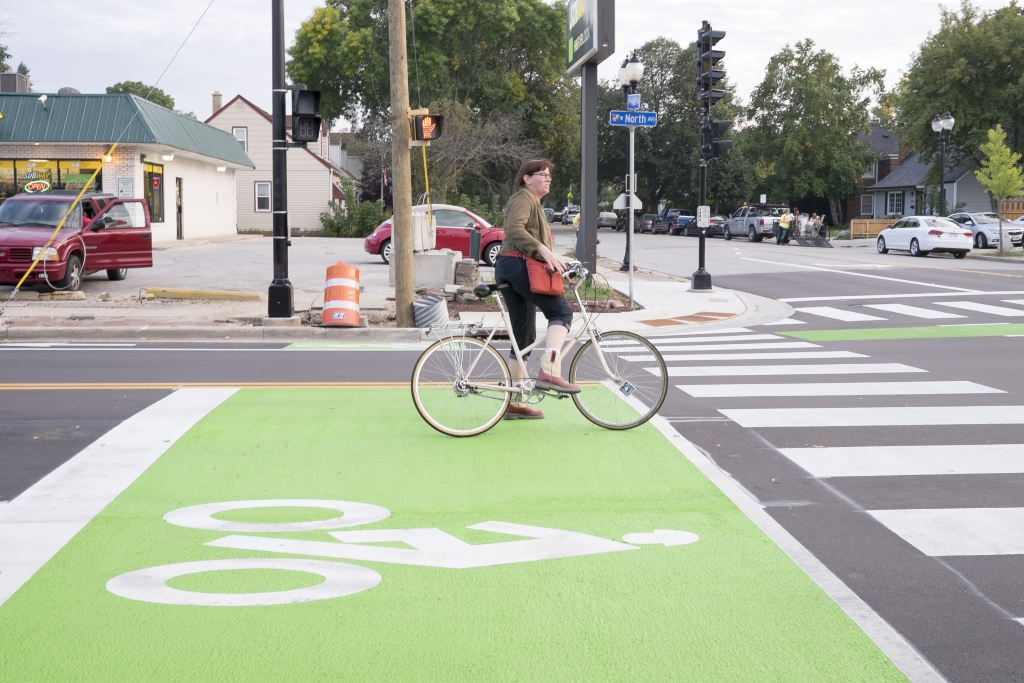
It may take a bit of education for people to learn how to use the bike boxes at 68th and North Avenue.
The recent investments and the plan are important, but we also need to give credit to the first businesses that moved in before the plan was even written. I feel like Il Mito and Juniper 61 were pioneering new restaurants on North Ave. Closest to me, Juniper took over the old Jake’s building that had changed hands a number of times. The owners (who also own Cafe Lulu in Bay View) did a modern remodel, offered a delicious menu, creative cocktails and good service. Around the same time, the Rosebud and Times cinemas changed hands and the new owner began reinvesting with modern projection equipment, new comfortable seating and serving food and alcohol. So Juniper built on the success of Il Mito, and suddenly East Tosa had a nightlife scene with enough gravity to be considered a destination.
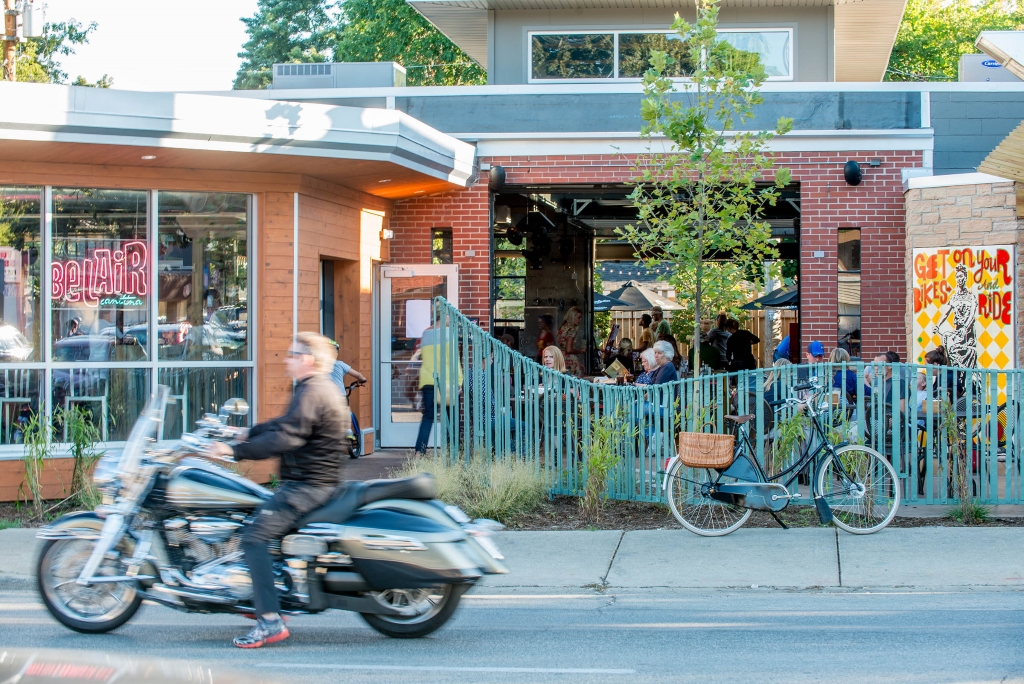
With their expansive patios and tasty margaritas, BelAir Cantina is a popular destination for people on bike and foot.
I live in the area, and I have been trying to remember the timeline for all the businesses that have gone in since, but there are so many, it is hard to do! I think this is the order of development: Il Mito, Juniper 61, Mekong Cafe, Cranky Al’s, BelAir Cantina, Rocket Baby Bakery, Red Dot, and Hue and Camp are going in, and those are just the restaurants. That’s not all, we have new businesses like fitness centers, guitar stores, etc. going in as well. I am friends with Scott Johnson and Kristyn St. Denis, two of the owners of BelAir, and they told me business was off the hook when they opened, busier than any of the numerous other restaurants they have owned over the last 20 years or so.
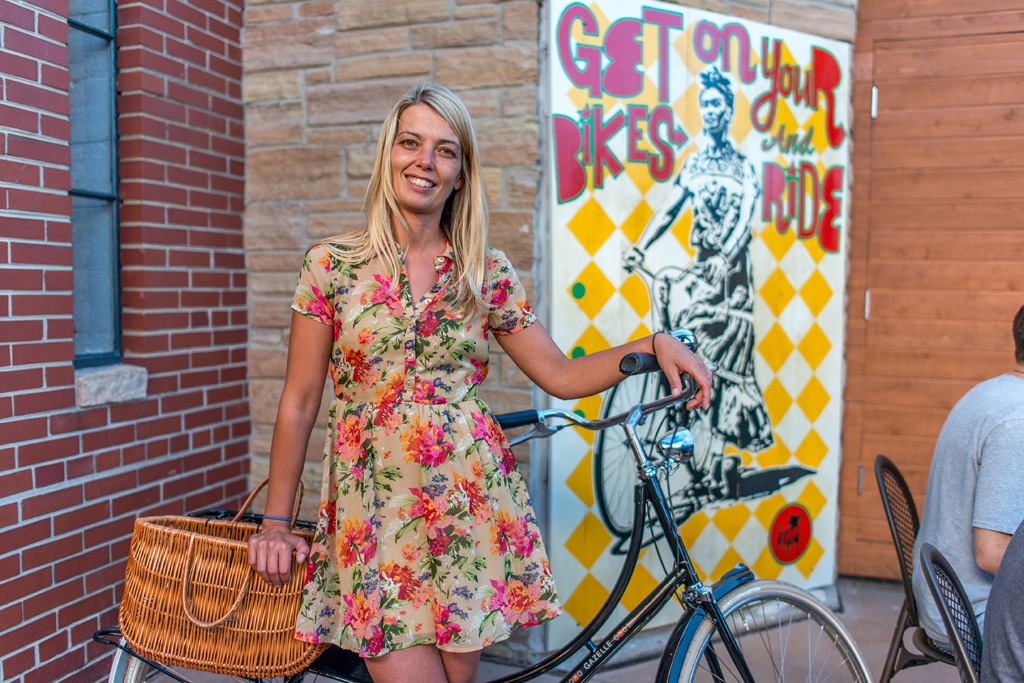
Kristyn St Denis is one of the owners of BelAir who also lives in the neighborhood was strongly in favor of the North Avenue redesign project.
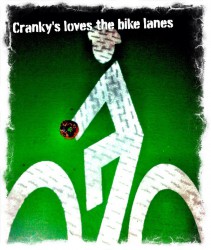
While some cities actually create playful bike people in their bike lane symbols, we have Cranky Al’s adding tasty treats to ours!
When the Wauwatosa council was considering approving this project, the public meetings were overwhelmingly packed with supportive crowds that included neighbors as well as many of the area business owners, like Cranky Al’s. “With those bike lanes coming in, it’s going to reduce the traffic flow and bikers are going to be able to bike on the lanes,” said Joey Carioti of Cranky Al’s Bakery. Carioti was so happy to see the green bike lanes go in, he literally invited people to get donuts by bicycle with the image to the right.
Erik Busby, the general manager at the Belair Cantina, said their restaurant group encourages employees as well as customers to commute to work by bicycle. “It’s a beautiful city, so to see it on two wheels is real important,” Busby said.
Even though the construction on North Ave. is not complete, it will be done soon, I have already noticed an increase in people riding on North Ave. Before the project most people (me included) avoided riding on North Ave, taking parallel side streets as much as possible before cutting over to get to the businesses on North Ave. Now I see people confidently cruising down the smooth new pavement. One of the true testimonies to a bicycle friendly street is whether parents are willing to ride with their kids there, and I have been seeing more tiny wheels and Burley trailers too.
In addition to improvements for people on bicycles and on foot, the project removed the left turn only lanes that created a serpentine travel pattern for motor vehicles. That was an early attempt at slowing traffic on North Ave., and while it did slow motor vehicles, it didn’t work well for other users and most drivers hated it. The new design with bike lanes, pedestrian islands and smaller bump outs appears (anecdotally) to have a similar traffic calming effect without the swerving traffic.
All things considered, it looks like Wauwatosa did just about everything right on this project.
You can come to the grand re-opening ceremony on October 4th, which will feature a ribbon cutting, bike parade, pedestrian and cycle safety presentation.
This story was originally published by the Bicycle Federation of Wisconsin.
Bike Czar
-
Join a Bike Ride Under the Polish Moon
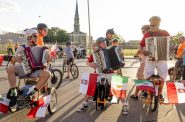 Jun 1st, 2018 by Dave Schlabowske
Jun 1st, 2018 by Dave Schlabowske
-
9 Reasons to Join National Bike Challenge
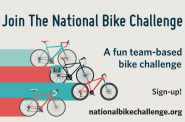 May 4th, 2018 by Dave Schlabowske
May 4th, 2018 by Dave Schlabowske
-
Biking Through the Mindoro Cut
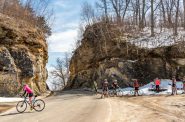 Apr 27th, 2018 by Dave Schlabowske
Apr 27th, 2018 by Dave Schlabowske


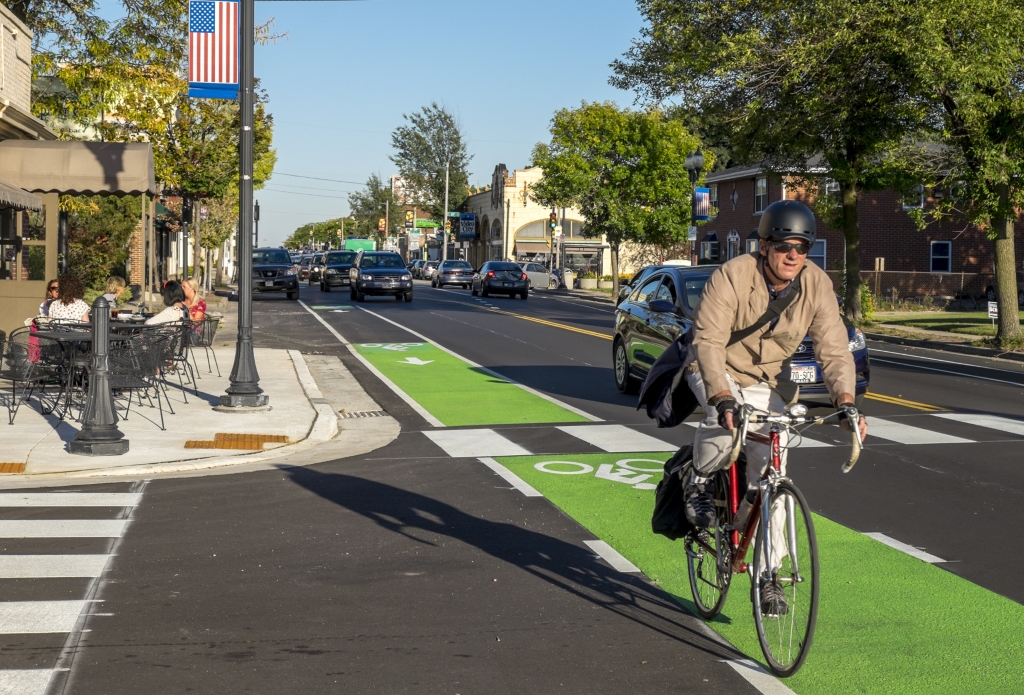
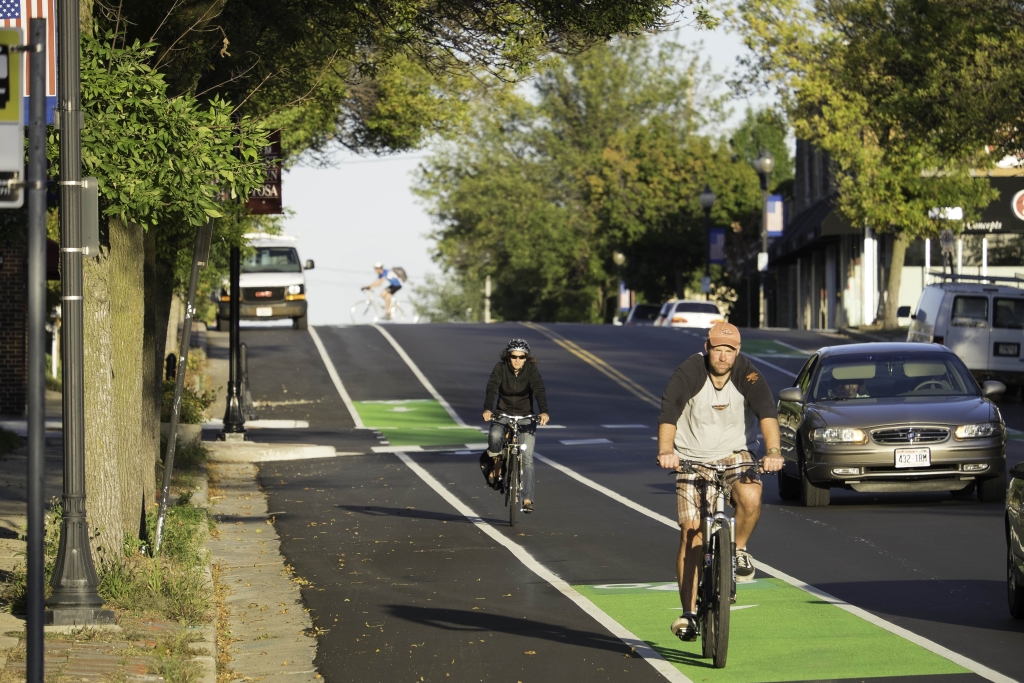
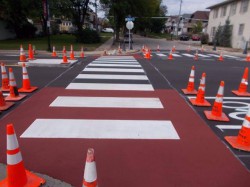

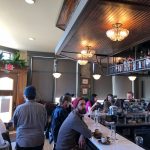


















If this helps cycling and promotes safety it is welcome, but we must still push safety: bright closes, follow the law, watch out for cars, pretend ah they do not see you, if you ride North ave or any other street that is more narrow, and has choke points get one of those strobe lights, people see those. I have lost 4 friends, all bike racers and every time the cars said that they did not see them
.
Dave;
I congratulate these folks, government, business and citizens, for their progressive actions regarding their streetscape. One of the things that stood out to me in your story was the picture of the “Bike Box” and the caption indicating it would take some education to make this feature workable.
How does a Bike Box work?
You are not the only one to ask Jeff, so I put up this informational blog post and video today. http://wisconsinbikefed.org/2014/09/29/bike-boxes-only-work-when-signal-is-red/
I’m glad you mention the importance of promoting safety WCD. When it was noted that one of the major accomplishments of the project in Sheboygan has been a significant improvement in safety, you still called it a failure and a waste of money. It’s nice to see you come to your senses.
Sheboygan got federal grant for cycling, spent almost million dollars and had results that were negative. The Left thinks anytime that we spend million dollars it is success. I think it was a failure of taxpayers money.
I have been riding for almost 67 years and love it but afraid that Wisconsin with it’s weather will never change much. I think the bike paths are good idea and ride them daily, wish we had more. I do not think it is good idea to funnel riders down the main drags with people going close to 50 mph and lots of parked cars. I stay away from them. If you want to promote cycling, start at the bottom, as few kids ride bikes to school anymore. Places like madison are full of bikes. I would love to see more Junior racers. When my kids were racing we had hundreds, now very few.
Looks like project cost about $1.6M plus maintenance per May 7 TosaNow story. http://www.wauwatosanow.com/news/wauwatosa-approves-colorful-bike-lanes-crosswalks-for-north-avenue-b99264427z1-258297621.html
The results were not negative. You repeating that over and over doesn’t make it true. Massive safety improvements are just one of the benefits in Sheboygan. You admit above that improving safety is important, so why is it not important in Sheboygan?
@PMD Right. And WCD ignores a couple important items in that report. The other cities all saw increases in ridership, and not all of the significant bicycle improvements were done at that time of the study in Sheboygan.
Your opinions do not interest me, show me facts.
As a former Tosa resident, both the West and East sides, I am quite jealous of these improvements. I still remember when North Avenue was redone the first time, with all those bump outs. Still, this is a massive improvement to livability. “When you build it, they will come.”
(I biked in Tosa long before it was “cool”)
I did the last time we discussed this WCD. I linked to all of the study results showing major improvements in bike safety in Sheboygan. You obviously didn’t care and continued to insist it was a failure, while then contradicting yourself by stating the importance of safety improvements. The improvements in Sheboygan are: More walking, improved public health, a major reduction in biking accidents, and enhanced accessibility and visibility for bikers.
Is this a joke? you take credit for more walking, improved public health, that would be interesting to measure, . I saw reduced biking, no change in accidents but a lot of money spent on bike lanes.
I’m not taking credit for anything. Those are the positive results in Sheboygan, and it includes a significant improvement in bike safety. Pedestrian and bicycle injuries decreased drastically in Sheboygan between 2002 and 2012. Public health improved. I’m not making this up WCD. It’s right there: http://www.fhwa.dot.gov/environment/bicycle_pedestrian/ntpp/2014_report/page04.cfm#Toc386019770
Here are disappointing results from US DOT> 28 mil spent from 2005 to 2012. After spending that amount of money Sheboygan county has 148 pedestrians and 65 cyclists using expanded system. They built 9.6 mi shared use paths ,43 mi on street lanes, 47.2 of on street bike lane markings, 16.1 crosswalks and sidewalks, 25 racks, 905 bike parking spaces In 2007 they had 80 pedestrians and 65 cyclists. Reduction in some injuries and problems cost about a million each.
I posted this on Facebook: Wisconsin Conservative Digest
It is nuts to use hiway money for this, even though I like to ride.
First of all, increased ridership is not the only measure of success. Second, a marketing campaign to promote this hasn’t been implemented yet, so time will tell if ridership increases. And you have said improving safety is important. This program greatly improved safety.
And I’ll point out that not all of those bike improvements have been completed. Source that very report.
I am just heading out to the bike paths with my hunting dog for half an hour of sprints. At 74 my health is better cause of it. I enjoy and promote cycling but the place to start is with the kids and some programs, I back. i really questions these lanes on busy streets, I will not touch them even as safe as I ride. Too many nuts with phones etc that just do not see you. When I rode my cycle I did the same. You must assume that they do not see you. There is big question of how much is being spent and is it spent well.
In Amerstadm we rode bikes all over but in Paris/london would never ride a bike. Oslo okay. Milwaukee is not set up well for bikes so be damn careful.
Milwaukee is a great, easy, city to ride in.. And getting better all the time with improvements like those in the story.
With the exception of the few remaining hardcore “Vehicular Cyclists,” you won’t find too many people who will argue with you that separated bike paths are the most pleasant way to get from point A to B on a bicycle. The problem is they won’t fit most places people want to go on bicycles, particularly in urban areas that have been built up for decades. Luckily, with relative speeds very low in urban areas, riding a bicycle is safer on most streets in the city and inner ring suburbs like Wauwatosa than it is in the less populated exurban and rural areas where they may be lucky enough to have room for more paths.
There are urban alternatives to paths, like protected bike lanes, bicycle boulevards, enhanced bike lanes and regular bike lanes, each with a decreasing level of comfort for traffic intolerant people who want to get where they need to go on a bicycle. The truth is if we want to give the public what they claim they want, we will have to build more protected bike lanes and bicycle boulevards. Because protected lanes require bigger changes in traffic patterns, and often come with a higher cost, they are more difficult to build both in terms of political will and finding places where they fit without removing too much parking. Bicycle boulevards do not require any loss of parking and have the andillary benifits of reduced speeding and cut-through traffic on local streets. They typically can only get you within a block or two of your destination though.
Eventually, if we are going to solve our transportation funding crisis and create more livable, economically successful communities, we will have to get more conservative about giving away free places to park, remove more parking in most places in the US, and we will have to start charging people market rates for parking. That is just what they did in Amsterdam where you enjoyed riding so much, and it was a huge success. Certainly there are other differences between Amsterdam and major cities in the US, but the law of supply and demand and the build it and they will come rule are the same here as there. The Dutch made a conscious choice to remove parking for cars to add protected bicycle lanes (or cycletracks as they call them). Today they still don’t subsidize free parking in their urban centers because they wanted to do just what the residents around East Tosa wanted, a better place to live and more economic development. While I will be the first to admit that we will not see that paradigm shift in the US for some time, perhaps the transportation funding crisis will force us to take an honest look at what we subsidize and how we pay for what we want.